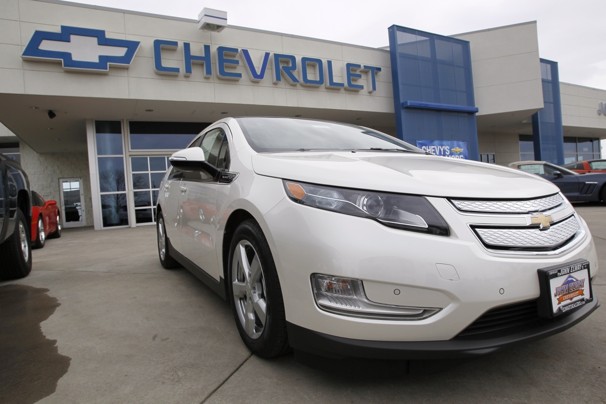Sales rose mostly because of discounts of almost $10,000, or 25 percent of the Volt’s sticker price, according to figures from TrueCar.com, an auto pricing website. Other pricing services gave similar numbers, and dealers confirmed that steeply discounted Volts are selling better than a few months ago.
GM’s discounts on the Volt are more than four times the industry’s per-vehicle average, according to TrueCar estimates. Edmunds.com and J.D. Power and Associates say they’re about three times the average. Discounts include low-interest financing, cash discounts to buyers, sales bonuses to dealers, and subsidized leases.
Americans have been slow to embrace electric cars. But the Volt’s August sales show they’re willing to buy if prices are low enough. Even so, electrics have a long way to go before they enter the mainstream and make money for car companies. Electrics and gas-electric hybrids account for just 3.5 percent of U.S. auto sales this year. GM is losing thousands of dollars on every Volt, raising the question of how long it can keep eating the steep losses.
For the foreseeable future, carmakers will have to cut prices to move electric vehicles off dealer lots. The nonpartisan Congressional Budget Office says the cost of electric cars must drop to be competitive with gasoline-powered ones.
GM executives have conceded from the start that they were losing money on the Volt, and that was before the big discounts.
Now the losses could be even higher. It costs $60,000 to $75,000 to build a Volt, including development, manufacturing and raw materials, estimates Sandy Munro, president of Munro & Associates, a Troy, Mich., a company that analyzes vehicle production expenses for automakers. Much of the cost comes from an expensive combination of two power systems — electric and gasoline. With a sticker price of $40,000, minus the $10,000 the company pays in incentives, GM gets roughly $30,000 for every Volt. So it could be losing at least $30,000 per car.
“It certainly wasn’t a rousing success,” Carter Driscoll, senior analyst for CapStone Investments who follows electric cars, says of the Volt.
GM confirmed there are incentives on the Volt and that the company loses money on the car. But the automaker declined to give figures for the discounts or the losses. The figures exclude a federal tax credit that goes to buyers.
The automaker says Munro’s estimate is high because it doesn’t spread the Volt’s costs far enough into the future, when more Volts will be sold. Automakers typically spend $1 billion or more to develop a car, and sometimes don’t recoup the investment and start making money until late in its life. Also, Volt technology will be used in future cars and trucks, eventually leading to profits, the company says.
